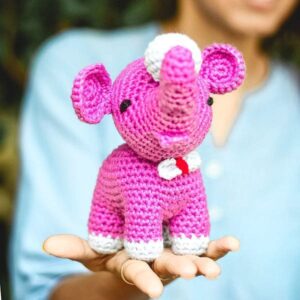In an era marked by environmental concerns and a growing commitment to sustainable living, the choices we make as consumers play a pivotal role in shaping the future of our planet. One impactful decision is opting for products made from repurposed materials rather than new resources, a choice that aligns with the principles of the circular economy. This conscious shift not only contributes to environmental conservation but also actively participates in a transformative model designed to minimize waste and foster long-term sustainability.
Understanding the Circular Economy:
The traditional linear economy, often described as “take, make, dispose,” follows a linear trajectory where raw materials are extracted, transformed into products, used, and eventually discarded. This linear approach not only depletes finite resources but also contributes to the mounting issue of waste and environmental degradation.
Contrastingly, the circular economy is a paradigm shift that seeks to create a closed-loop system. The primary goal is to keep products, materials, and resources in use for as long as possible, promoting a regenerative and restorative approach. By prioritising recycling, reusing, repairing, refurbishing, remanufacturing, and repurposing, the circular economy strives to break free from the shackles of a throwaway culture.
The Power of Repurposed Products:
Choosing products made from repurposed materials is a tangible way for individuals to actively participate in the circular economy. Repurposing involves taking discarded items or materials and transforming them into new, useful products, extending their lifecycle and diverting them from landfills.
Environmental Conservation:
Repurposed products significantly reduce the demand for new raw materials, curbing the environmental impact of resource extraction and manufacturing. By opting for items that have been creatively repurposed, consumers contribute directly to a reduction in waste and environmental stress.
Circular Consumption:
The act of purchasing repurposed products aligns with the circular economy’s core principles. Instead of perpetuating the linear model, consumers become integral participants in a cycle that values sustainability, resource efficiency, and the responsible use of materials.
Creative Innovation:
Repurposing encourages creative thinking and innovative design solutions. Artists, designers, and entrepreneurs explore novel ways to transform discarded materials into functional and aesthetically pleasing products, showcasing the potential for innovation within sustainable practices.
Community Engagement:
Repurposing often involves local artisans and craftsmen, fostering community engagement and supporting small-scale industries. This localised approach contributes to a more sustainable and resilient economy, emphasising the importance of collaboration and shared responsibility.
Navigating the Transition:
As consumers, we hold the power to influence industries and drive change through our choices. Embracing repurposed products involves a conscious decision to break away from the disposable mindset ingrained in the linear economy. Here are practical steps to navigate this transition:
Educate Yourself:
Learn about the impact of consumer choices on the environment. Understanding the lifecycle of products and the benefits of repurposing empowers individuals to make informed decisions.
Support Sustainable Brands:
Seek out and support brands that prioritise sustainability and incorporate repurposed materials into their product lines. By endorsing such companies, consumers contribute to the growth of a market that values eco-friendly practices.
Engage in DIY Repurposing:
Explore your creativity by repurposing items at home. Transform old furniture, clothing, or household items into new and functional pieces, giving a personal touch to the concept of repurposing.
Advocate for Change:
Use your voice to advocate for sustainable practices and policies. Encourage businesses, communities, and policymakers to embrace the circular economy as a viable solution to environmental challenges.
In conclusion, the shift from a linear to a circular economy is a collective endeavor that starts with individual choices. Embracing the power of repurposed products not only reduces our ecological footprint but also contributes to the creation of a more sustainable and resilient world. As we navigate this transformative journey, each repurposed purchase becomes a tangible step towards a future where environmental conservation and responsible consumption go hand in hand.
Source Credits: rainbowlifeuk
Also Read: Crystal cleansing a comprehensive guide to purifying your precious gemstones







